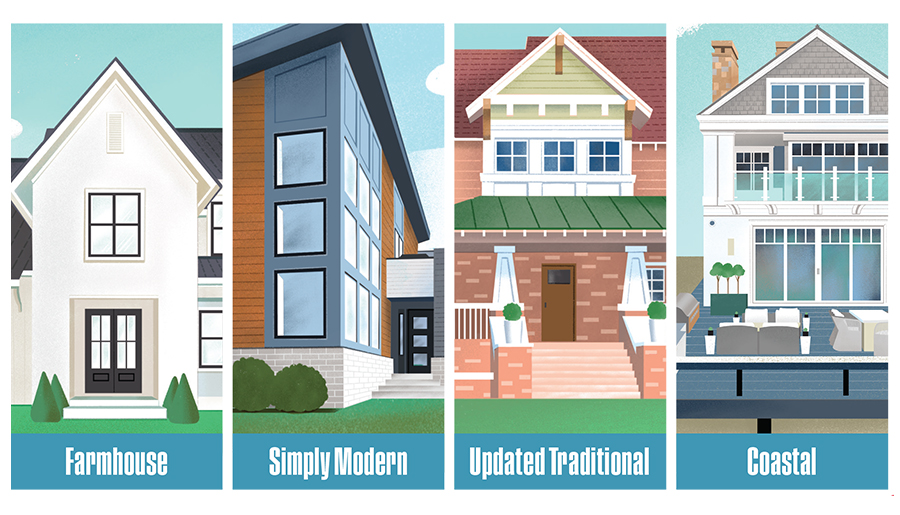It’s time for history to repeat itself with classic window designs.
For centuries, window designs had identifiable features and characteristics that marked their place in architectural history. Today, builders are recognizing which of these features to mimic or recreate in order to achieve a classical look for a modern home. These characteristics are often narrowed down to casing, sill detail, and divided lite patterns. With these timeless window styles, homeowners revive that archival aesthetic while also having the functionality of a modern window. JELD-WEN has a variety of window designs that can meet this desire for the historical, bringing a classic look into modern day.
Exterior casing detail
One prominent characteristic from the 1700s was heavy exterior casing detail. These windows had wider, heavier, and more pronounced casing that emphasized each window and popped out from the house. Builders and architects from the 18th century typically used wide, flat, or profiled casing to accent the window and door presence for a home. Crown molding pediment or backband were also popular during this time, their purpose being to draw attention while providing strength over the window.
Though modern windows often have a slender casing, builders achieve this historical look by making the casing thicker and more detailed; the bigger and more artistic the casing, the more historical a home appears.
Heavy sill detail
Historical double hung sills often had sill details that highlighted each window. They were heavier, more noticeable, and often had sill horn extensions and mild slopes (by about 6º). Today, by contrast, sills are thin, extend to only meet the side casing, and have a steeper slope (by about 14º). Historic windows also have rounded sill details that accentuate the window, creating a classic 18th and 19th century American style.
Builders achieve this archival style primarily by extending the top and bottom casing beyond the side casings. This also elongates the window and provides an illusion of strength from the exterior.

Exterior casing detail and divided lites from a Brickmould Vinyl window give a 19th century aesthetic.
Divided lites and glass
The choice of lite cuts can have a great impact on the proportion of glass and appearance of the window. Historic windows had a wide arrangement of lites, from typical 6 over 6 lites (3 wide and 2 high), to diamond patterns, to gothic styles. Often, divided lites enhance the aesthetic appeal of a home, and, with modern float glass, homeowners can have a window that appears historic but still has the durability of a modern window.
For designers, it’s important to be consistent in lite pattern selection. Try to also adjust individual lite cuts with unit size to maintain consistent glass proportion.
Achieving that historical aesthetic
JELD-WEN has a variety of affordable, modern windows that bring the classical past into the contemporary present for almost any home.
- JELD-WEN® Brickmould Vinyl: These windows deliver energy efficiency with a look of traditional Georgian-style wood windows.
- JELD-WEN® Flat Casing Vinyl: For an American Colonial style, these windows offer three sides of wide casing for an accurately historical look.
- JELD-WEN® Siteline Clad-Windows: thoughtful design details, sizes, and shapes to match just about any architectural style.
For more information, contact your local JELD-WEN expert to learn about which historical window style can best accentuate your project.



